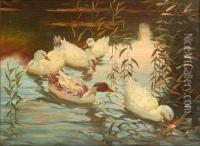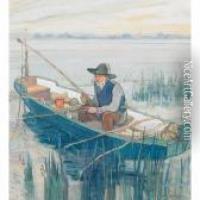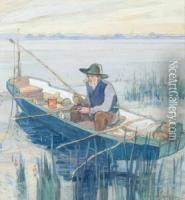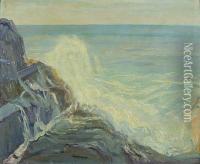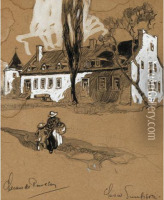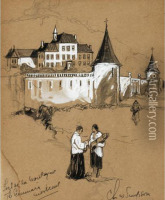Charles Walter, Simpson Rca Paintings
Charles Walter Simpson, RCA, was a prominent British painter, illustrator, and etcher whose artistic journey spanned the late 19th and well into the 20th century. Born in Camberwell, London, in 1885, Simpson's early life was steeped in the rich cultural milieu of Victorian England, which would later influence his artistic endeavors. He demonstrated a keen interest in art from a young age, prompting him to pursue formal education in the field. Simpson honed his skills at the Royal College of Art, where he was exposed to a variety of artistic styles and techniques, laying the foundation for his diverse body of work.
Simpson's artistic output was notably varied, encompassing watercolors, oils, and etchings. He was particularly celebrated for his landscapes and marine scenes, capturing the subtle interplay of light and color with a distinctive sensitivity. His works often depicted the rugged beauty of the Cornish coast, where he eventually made his home. The influence of Impressionism can be seen in his approach to light and color, though he maintained a unique stylistic identity.
Beyond landscapes, Simpson also had a keen interest in animal studies, especially birds, contributing illustrations to several ornithological publications. His ability to capture the essence and dynamism of his avian subjects earned him acclaim within scientific and artistic communities alike.
Simpson's contributions to the art world were recognized with his election to the Royal Cambrian Academy of Art. Throughout his career, he participated in numerous exhibitions, both in the UK and internationally, contributing to his reputation as a respected artist of his time.
Despite the breadth of his work, Charles Walter Simpson was not merely confined to painting and illustration. He was an avid writer, penning books that explored the intersection of art and natural history, further showcasing his deep appreciation for the natural world.
Simpson's legacy is that of an artist who adeptly bridged the realms of art and science, capturing the beauty of the natural world with a keen eye and a profound sense of wonder. He passed away in 1971, leaving behind a rich body of work that continues to be celebrated for its contribution to British art history.
